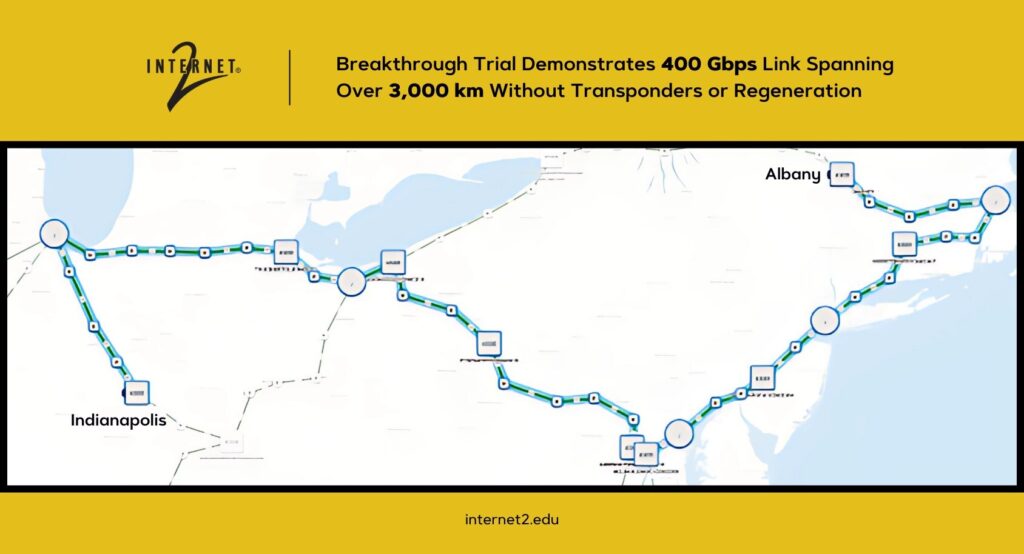Sure! Here’s the translation to American English:
The field test redefines network architecture for education and research with greater efficiency, on-demand capacity, and reduced complexity.
In a demonstration already regarded as a milestone in coherent optical network technology, Internet2 and Cisco successfully established a direct connection of 400 Gbps between the cities of Albany (New York) and Indianapolis (Indiana), spanning over 3,000 kilometers, without the need for modular transponders or intermediate signal regeneration. The field test was conducted on the operational national network of Internet2, focused on the research and education (R&E) sector.
This advancement has been made possible through the use of pluggable coherent optical modules, which promise to revolutionize long-haul connectivity with more sustainable, scalable, and flexible solutions, particularly relevant for the academic and scientific community.
Coherent Optical Networks Directly from the Router
Since 2023, Internet2 has begun integrating coherent optics directly into routers distributed throughout its national infrastructure in the United States. This has enabled the establishment of 400 Gbps links in both metropolitan areas and distances of up to 600 km. Currently, 24 backbone links of 400 Gbps are already operating with Cisco optical technology, representing more than 20% of its core infrastructure.

The recent field test represents an even greater leap: achieving that speed over 3,000 km without intermediate regeneration, with a consumption of less than 24 watts per module, all using Cisco’s QSFP-DD Ultra Long Haul (ULH) technology, integrated into Cisco 8201 routers based on Cisco Silicon One.
“Not long ago, we could only reach similar distances with 100 Gbps links and dedicated transponders. Now, we achieve 400 Gbps without regeneration,” stated Chris Wilkinson, Senior Director of Network Infrastructure at Internet2.
Real Impact, Real Results
The test was not conducted in a laboratory but rather on a real production network. This confirms the operational viability of these advancements in complex and mission-critical environments such as education and research.
From Cisco, Bill Gartner, Senior Vice President of Optical Systems and Optics, stated that this represents “a paradigm shift in long-distance networks,” emphasizing the energy efficiency and unprecedented performance of this new generation of coherent optics.
Towards a More Sustainable and Automated Network
One of the goals of the latest evolution of the Internet2 network has been to reduce energy consumption and environmental impact without compromising speed or capacity. Thanks to these innovations, the network has achieved a 68% reduction in energy consumption, also optimizing space in data centers.
Additionally, interoperability remains a key element of Internet2’s multi-vendor approach, facilitating integration between regional, national, and international networks.
What’s Next: Optimization and Automation
Internet2 is already working on the next evolutionary phase of its infrastructure, focusing on automation, network transparency, routing integrity, and expanded support for global research. All of this is built on a network architecture optimized for optical and packet technology to provide on-demand capabilities, greater resilience, and smarter management.
This advancement not only redefines how high-performance networks are built but also lays the groundwork for the future of scientific and academic collaboration worldwide.

